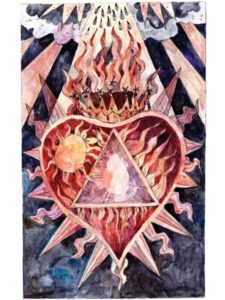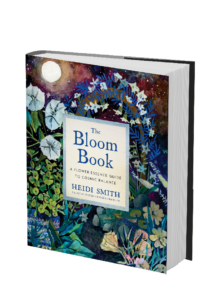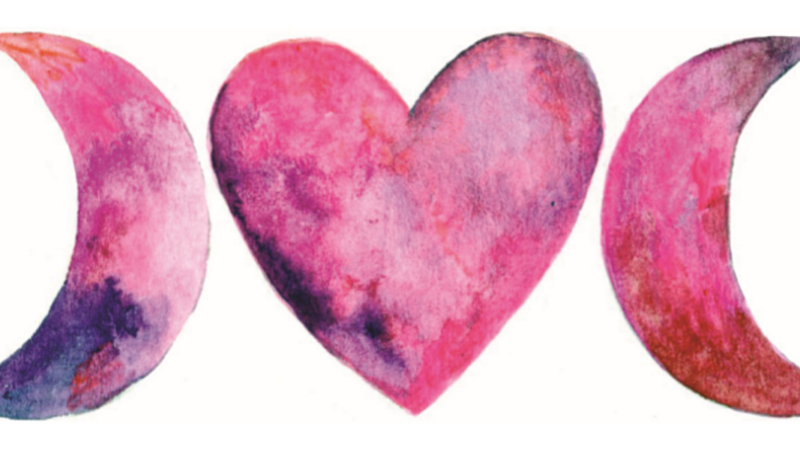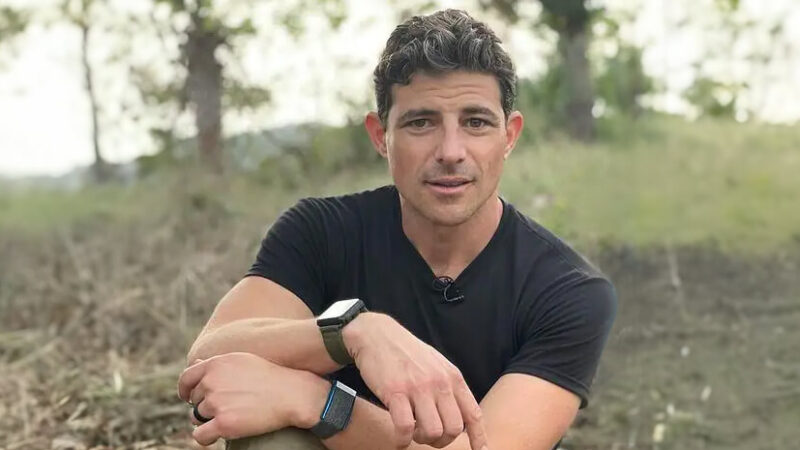-
E91: Allowing Life to Remove Your Blockages
Michael Singer — July 2, 2025
The foundational flaw in human behavior is the belief that "I'm not okay." What follows is the...
-
Cyndi Dale: Becoming Your Own Best Ancestor
Cyndi Dale — July 1, 2025
On the surface, it appears as though the lives we live proceed forward moment by moment in a...
-
Honey Tasting Meditation: Build Your Relationship with Sweetness
There is a saying that goes “hurt people hurt people.” I believe this to be true. We have been...
Written by:
Amy Burtaine, Michelle Cassandra Johnson
-
Many Voices, One Journey
The Sounds True Blog
Insights, reflections, and practices from Sounds True teachers, authors, staff, and more. Have a look—to find some inspiration and wisdom for uplifting your day.
Standing Together, and Stepping Up
Written By:
Tami Simon -
The Michael Singer Podcast
Your Highest Intention: Self-Realization
Michael Singer discusses intention—"perhaps the deepest thing we can talk about"—and the path to self-realization.
This Week:
Cyndi Dale: Becoming Your Own Best Ancestor -
Many Voices, One Journey
The Sounds True Blog
Insights, reflections, and practices from Sounds True teachers, authors, staff, and more. Have a look—to find some inspiration and wisdom for uplifting your day.
Take Your Inner Child on Playdates
Written By:
Megan Sherer
600 Podcasts and Counting...
Subscribe to Insights at the Edge to hear all of Tami's interviews (transcripts available, too!), featuring Eckhart Tolle, Caroline Myss, Tara Brach, Jack Kornfield, Adyashanti, and many more.
Most Recent
Diana Spalding: Let’s Nurture Moms and Birth a New C...
Diana Spalding is a certified nurse midwife and mother of three young children. She has a master’s degree in midwifery from NYU and has worked as a nursing school professor at Cedar Crest College, as well as a midwifery school advisor at Georgetown University. With Sounds True, Diana Spalding is the author of the book The Motherly Guide to Becoming Mama: Redefining the Pregnancy, Birth, and Postpartum Journey (with Jill Koziol and Liz Tenety). In this podcast, Diana speaks with Sounds True founder Tami Simon about creating a more nurturing society for mothers, redefining motherhood for today’s times, the incredible productivity of moms at home and work, and much more.
DIY Rose Essence and Heart Breathing Ritual
The heart chakra is the central integrating chamber of the chakra system. Through the healing power of love, all things eventually find their way to connection and wholeness.
ANODEA JUDITH
Heart Medicine Rituals
The greatest lesson I have learned so far is to exist within my heart. This is a lifelong practice for me because, like many, I was not taught to inhabit my heart space. On a physical level, the general collective is not doing so well in our hearts. This is evidenced by the stark reality that heart disease is the leading cause of death worldwide. This high incidence of disease points to a deeper situation of the heart, but in order to be open to the possibility that more profound heart healing is necessary and possible, we must open our minds to a more metaphysical or energetic interpretation of what the heart is and what it does. Ancestrally, the heart held a much higher evolutionary significance, and as our consciousness split, we moved from inhabiting our hearts to glorifying our minds. Perhaps this disconnect can illuminate some clues for us to consider to reclaim more balance within our hearts, ourselves, and our world.
Vibrationally, the heart contains the strongest electromagnetic field of any organ in the body. Transference of heart energy can occur in close proximity with another human or animal; and if you apply the theories of quantum entanglement and wave function collapse, transference of heart energy can resonate beyond space or time. Plants and the elements, too, can have a positive entrainment effect on the heart, reiterating the interconnectedness of all life and the organic balance nature engenders. In both traditional Chinese and Tibetan medicines, the heart is the mind. In TCM, grief is stored in the lungs and closely related to the heart. The Hopi defined harmony as one’s heartbeat in resonance with others and the Earth.
Our liberation is tied to the heart. The cost of liberation is unique to every person and is cosmically linked to each of us. The price of liberation varies for each individual, but we are given choices: in what we think, what we feel, what we believe, how we want to be. The inability to see choice is the unconsciousness of the fear-based toxic masculine that seeks to keep us disconnected and disempowered.

Our liberation depends largely on our ability to love unconditionally. Unconditional love means loving without circumstance or codependence. This can take different forms, from exiting a toxic relationship to taking more care of yourself. And it doesn’t stop there. If you want to get really free, you have to love yourself no matter what, and love all beings no matter what. Tall order? Yes. Impossible? No! While humans are conditioned to be in separation, plants (and animals) hold only unconditional love for all life. There are people on this Earth who radiate unconditional love, and when you are in their company, your heart is completely relaxed and open. For instance, my heart feels completely free when I am with people and animals who love me unconditionally. My heart also feels free in this way when I am in nature. Can you think of anyone who loves you unconditionally? Or perhaps it’s easier to think of an animal or pet? What if you loved yourself and everyone like that? What if you loved all your uncomfortable parts, illnesses, and neuroses like that?
EXERCISE: Making a Rose Essence and Heart Breathing Exercise
There are a few plants whose application is almost universal, and the rose is one such flower. Roses hold the frequency of unconditional love and have an affinity for the heart chakra. This ritual works best with either a wild growing or organically cultivated rose; it can be any species within the Rosa genus. Some of the lower vibratory states that can be addressed with rose include grief, loss, heartbreak, depression, and panic.
This ritual is very simple. You’re going to combine the process for making your own medicine (see a simple how-to video here) using the rose of your choice, with the heart breathing exercise that follows. The heart breathing can be done while the flowers are in the water, working their magic. The heart energy you engage during the medicine-making process will become part of the energetic signature of your flower essence. After you bottle it and make the dosage bottle, take a few drops and see what you notice around your heart. Be sure to notate your findings. You now have a rose flower essence for your apothecary whenever you or someone else needs it.
HEART BREATHING RITUAL
After you have placed the flowers in the bowl with the water, sit comfortably on the ground, if possible. Close your eyes or set your gaze low. Place both hands over your heart and begin to breathe into the heart space. Visualize the rose you are working with. Notice how the breath moves in and out of the heart—not forcing the air, just allowing it to move. See if you can sense into how the heart is feeling—in the front, in the back, all sides. Be sure to breathe into the back of the heart space. Notice how the heart feels when you place your awareness on it. See if it’s okay to allow whatever is arising, witnessing without judgment.
After a few minutes, begin to bring the heart back into a neutral position. Thank your heart and the spirit of rose for sharing with you. Feel your body making contact with the Earth, deepen the breath, and slowly open your eyes.
The video on how to make your own flower essence medicine can be found here.
This is an excerpt from The Bloom Book: A Flower Essence Guide to Cosmic Balance by Heidi Smith.


Heidi Smith, MA, RH (AHG), is a psychosomatic therapist, registered herbalist, and flower essence practitioner. Within her private practice, Moon & Bloom, Heidi works collaboratively with her clients to empower greater balance, actualization, and soul-level
healing within themselves. She is passionate about engaging both the spiritual and scientific dimensions of the plant kingdom, and sees plant medicine and ritual as radical ways to promote individual, collective, and planetary healing. She lives in Brooklyn, New York, with her partner and two cats. For more, visit moonandbloom.com.
Learn More
Sounds True | Amazon | Barnes & Noble | Bookshop
Sah D’Simone: Becoming Spiritually Sassy: Awaken...
Sah D’Simone is a spiritual guide, meditation teacher, transformational speaker, and bestselling author. Born in Brazil, Sah moved to the US when he was 16. Today, he leads a heart-based healing movement rooted in tried-and-true techniques, pioneering a spiritually sassy approach in which joy and authenticity illuminate the spiritual path. In this podcast, Sah speaks with Sounds True founder Tami Simon about his new book, Spiritually Sassy: 8 Radical Steps to Activate Your Innate Superpowers. Tami and Sah also discuss: the importance of reclaiming beauty, playfulness, and lightheartedness on the spiritual path; what it means to be a “joy activist”; Sah’s journey to becoming a spiritual teacher; the innate goodness within each one of us; forgiving the past; the evolution of Indian teachings in the West; the “spiritually sassy” glossary of terms; and much more.
Customer Favorites
Matt Gutman: Conquering a Lifetime of Panic Attacks
28% of Americans will experience a panic attack in their lifetime. Some researchers say that number is closer to 50%. Renowned ABC News correspondent, Matt Gutman, never felt afraid when assigned to active and dangerous war zones. Yet when he had to speak on live television in front of a viewership of 9 million people, the seemingly unflappable reporter suffered intense panic attacks that nearly cost him his job. To help anyone whose life has been impacted by this often misunderstood mental health challenge, Gutman shares his personal journey in No Time to Panic.
In this podcast, Tami Simon speaks with Gutman about the book and the hard-won insights he brings his readers, exploring: The importance of destigmatizing panic attack disorder; conventional and alternative healing modalities; “retiring the drill sergeant” (aka managing the inner critic); excavating unresolved grief; how panic disorder can metastasize into other psychological issues; physical threats vs. social threats (and how we tolerate them); the evolutionary purpose of anxiety; how vulnerability is often the first step toward healing; the paradox of welcoming your panic; psychedelics and ego transcendence; the power of mindfulness and meditation; and more.
Note: This episode originally aired on Sounds True One, where these special episodes of Insights at the Edge are available to watch live on video and with exclusive access to Q&As with our guests. Learn more at join.soundstrue.com.
Healing the Trauma that You Don’t Know You Have
Most people living today are more traumatized than they know. But how could that be?
When we experience very distressing events, our nervous system goes into a state of overwhelm (or what neuroscientists call dysregulation). You may end up feeling less like yourself, unable to have a healthy range of experiences, but can’t easily connect the dots mentally or heal emotionally. It’s not your fault that this happens—it’s your nervous system’s built-in way of protecting you, and it happens outside your conscious awareness.
However, you can learn to recognize the effects of trauma. You can follow those threads through the maze of your past, to find ways of healing in the present that will improve your health mentally and emotionally.
Types of Trauma
While individuals differ in their responses, there are broad categories of trauma that we should all know exist: childhood trauma, racial trauma, sexual trauma, religious trauma, narcissistic abuse, war, pandemics and other natural disasters, and intergenerational trauma. Three of these types are briefly covered below.
Childhood Trauma
No family is perfect, but some do active harm. Too often, children suffer neglect and physical, sexual, or emotional abuse, often with no outside resources to protect them. Childhood trauma can also happen if the mother is treated violently, someone in the family has substance abuse problems or a mental illness, the parents are going through a divorce or separation, or one of the parents or a sibling dies.
In all of these situations, because a child’s nervous system is not yet fully developed, the childhood trauma often goes unidentified until something triggers a memory or compounds it, years or decades later.
Narcissistic Abuse
Many of us know someone who exhibits signs of narcissism, focusing exclusively on themselves and unable to empathize with or “make room for” others. If you’ve suffered abuse by a narcissist, whether they were a parent, partner, or boss, you may no longer trust your instincts in relationships or feel guilty about things that aren’t actually your fault or responsibility. You may feel you have to be “special” to gain recognition, and you may have developed a case of perfectionism to keep away the shame that your abuser made you feel for not living up to their impossible standard.
Global Events: Pandemic Trauma and War Trauma
The pandemic put virtually all of us into a “sustained survival mode” that evoked or caused trauma. The pandemic saw a 25 percent increase in anxiety and depression, according to the World Health Organization (WHO). As a shared trauma, it also led to widespread Post-Traumatic Stress Disorder (PTSD) and burnout among health-care workers. It affected parents who had to juggle supervising their children and working from home while schools were closed. And it deeply impacted those who experienced the loss of a loved one unexpectedly to COVID, who were often not able to say goodbye in person, weaving trauma into the fabric of their grief.
The first formally identified cases of PTSD (known as “shell-shock”) were in soldiers who served during World War I. Tragically, wars have been embedded into the human experience since recorded history. No matter whether it be the recent conflict in the Ukraine, the uprising in Iran, or ongoing conflicts elsewhere, the impact on the psyche of those living in those areas is severe. As widespread violence and threats of violence go on, month after month, traumatic stress compounds for both soldiers and civilians living in warzones. Even in areas where conflict is not directly taking place, there can be trauma impressed into those living in ongoing fear of nuclear war or attack.
How Trauma Works in the Nervous System
To understand your trauma, you’ll need to get to know your nervous system and how it responds to signals of danger, real or perceived.
Over the course of human evolution, our nervous system developed three kinds of responses to threats to help us get through dangerous experiences intact. These subsystems are known as: social engagement, sympathetic mobilization, and parasympathetic immobilization systems. They usually operate below our conscious awareness, but when someone experiences ongoing distress or a trauma that doesn’t resolve, the neurological connections behind these responses get strengthened and we become “stuck” in maladaptive patterns—through no fault of our own.
When the social engagement system responds, we look for help or someone to rescue us from the situation. If this response is encouraged, we may habitually “fawn” around others, hoping to appease anyone causing us distress. We can develop too much compassion for others, leading us to forget to care for ourselves, which over time creates more stress and trauma in our nervous system.
When the sympathetic nervous system responds, we engage in “fight, flight, or freeze,” to try to figure out what to do with the threat (freeze), then to subdue it (fight), or else escape it (flight). When this system is “stuck” in overdrive, we may have problems like depression, anxiety, or phobias.
If all other tactics fail, the parasympathetic nervous system can still put us into a collapsed, shut-down state (“faint”), as a way to survive with the least possible amount of damage when fighting or fleeing aren’t possible. This state is linked to depression and dissociation.
Symptoms of Trauma and PTSD
If you’ve sustained any form of trauma in the past, you may experience various difficulties, depending on the way the trauma got stuck in your system:
- Anxiety or Panic Attacks
- Denial
- Feeling emotionally numb or hopeless
- Hypervigilance
- Difficulty connecting with others
- Overwhelming shame or guilt
- Aggressive behavior
- Self-destructive behavior
- Addictions
- Insomnia and dysregulated sleep
- Flashbacks
Another way to determine whether you’ve dealt with trauma is to think about how you show up in a relationship. Do you enjoy some of your interactions with others, or do you often feel inner pressure around everyone you meet? Do you feel nurtured by one or more people in your life, or do you feel responsible to everyone, all the time? Do you feel uncertain around your loved ones, like you’re not really sure you can rely on them?
When we’ve experienced trauma in a past relationship, be it with a neglectful parent, an erratic partner, or an abusive boss, our nervous system tracks the impact, and it affects our present relationships—until we shed light on what’s happened and learn how to work through its effects on us.
Treatments for Trauma
In the last few decades, neurobiology has blossomed and cross-pollinated with psychology. New discoveries have been made, new theories have been tested, and thankfully, a range of therapies and treatments for trauma have been developed to help us cultivate deep self-regulation. Among them are somatic therapies such as Somatic Experiencing and sensorimotor psychotherapy, trauma-focused Cognitive Behavioral Therapy and Cognitive Processing Therapy, Eye Movement Desensitization and Reprocessing (EMDR) and “brainspotting,” and trauma-informed psychodynamic therapy.
Therapy is a wonderful option, but if you’ve been through individual therapy or want additional support, there are other ways to learn skills to work through trauma.
By committing to your own healing, you’ll not only create greater balance in your life, you will stop trauma from being passed on to the next generation—and you’ll bring a healing presence into the world.
If you’d like support in your commitment to healing trauma, you can check out The Healing Trauma Program, hosted by Jeffrey Rutstein, PsyD, CHT.
How to Stop Turning Your Back on Your Trauma
We Suffer Ahead of Time
There is a kind of pain that is born from the anticipation of something that we know will happen but has not yet happened. We suffer a lot for things that have not yet happened. We anticipate, in excruciating detail, the pain of a visit to the dentist or a planned surgery. We spend several months suffering the pain of giving birth. We suffer for the death of a loved one months before cancer takes their life. We suffer for things that do not yet hurt, in such a way that when real pain does arrive, our body and mind are already exhausted.
Our bodies are wise; this we have said already. Our bodies and our minds feel the impulse to repair the damage detected. When we feel pain, we activate a repair system with the objective of recovering the balance lost. But we must take care not to end up like Peter in the tale of “Peter and the Wolf”: he warned so many times about the wolf coming, without it being true, that when it did truly arrive, nobody believed him. If we activate the alert mechanism in the face of pain ahead of the time, then, when we need them the most, we won’t have any resources left to cope with it.
The source of emotional pain is often caused by:
- Adversity
- Frustration
- Disappointment
- Unexpected change
- Judgments and thoughts
- Reality
- Imagination
- Fear
- Anticipation
Suffering and adversity are just part and parcel of life. Any day we might experience the greatest and most unexpected of tragedies. But what really matters is not what could or might happen to us—which can be just about anything—but what is actually happening to us. When we speak about misfortune and adversity, we must speak about probabilities, not possibilities, namely the likelihood that any of the adversities we are exposed to might occur. Is there a chance that a piece of space debris might fall from outer space and split my head open? I don’t have the evidence to deny it. However, if I am going to be afraid of anything, in my case it would be the cows I meet in the mountains when I’m out for a run because it’s far more likely that I will be trampled by a cow than get hit by a piece of space debris.
So, if you ever ask yourself, “Why me?” remember that we are fragile; that we live in a hostile environment; and that sometimes, with the behaviors and the decisions that we make—or don’t make—we are taking risks that can lead us to adversity. However, at other times, the cruelest fate hits us with adversity.
Building a Wall Is Not the Solution
Some people think that the solution to live more at ease is to build a wall to defend themselves. Do not make that mistake; the wall will defend you from exterior aggressions, but it will also prevent you from enjoying the wonderful things around you. If you build a wall, you will prevent disappointment, but you will feel bitterly lonely. A wall can protect you from fear of change but will create an inability to adapt to different situations. The wall will provide you with safety, but it will also make you a person who is dependent on its protection; it will make you insecure and fearful of what will happen when that wall disappears. I encourage you to build, instead of a wall, a library full of resources to help you maintain the level of emotional strength that you need.
What’s more, when we attempt to protect ourselves by adopting strategies that are damaging, and when we wear armor, we disconnect emotionally from the people around us and from reality. Building a wall is never the solution because it will not protect us from that pesky space debris looming above our heads. Don’t forget: prudence is good, fear is not.
Reflection Exercise
I encourage you to do an exercise. Analyze the pain you are experiencing and try to identify its source. Don’t leave it for tomorrow. Don’t click to the next site just yet. Just pick up a notebook and a pencil, find a quiet place right now, and reflect. Take action, because it’s up to you to do something about this. Nobody will do it for you.
Learn more about this powerful practice of healing trauma in Kintsugi: The Japanese Art of Embracing the Imperfect and Loving Your Flaws by Tomás Navarro.
Tomás Navarro is a psychologist who loves people and what they feel, think, and do. He is the founder of a consultancy practice and center for emotional well-being. He currently splits his time between technical writing, training, consultancy, conferences and advisory processes, and personal and professional coaching. He lives in Gerona and Barcelona, Spain.






